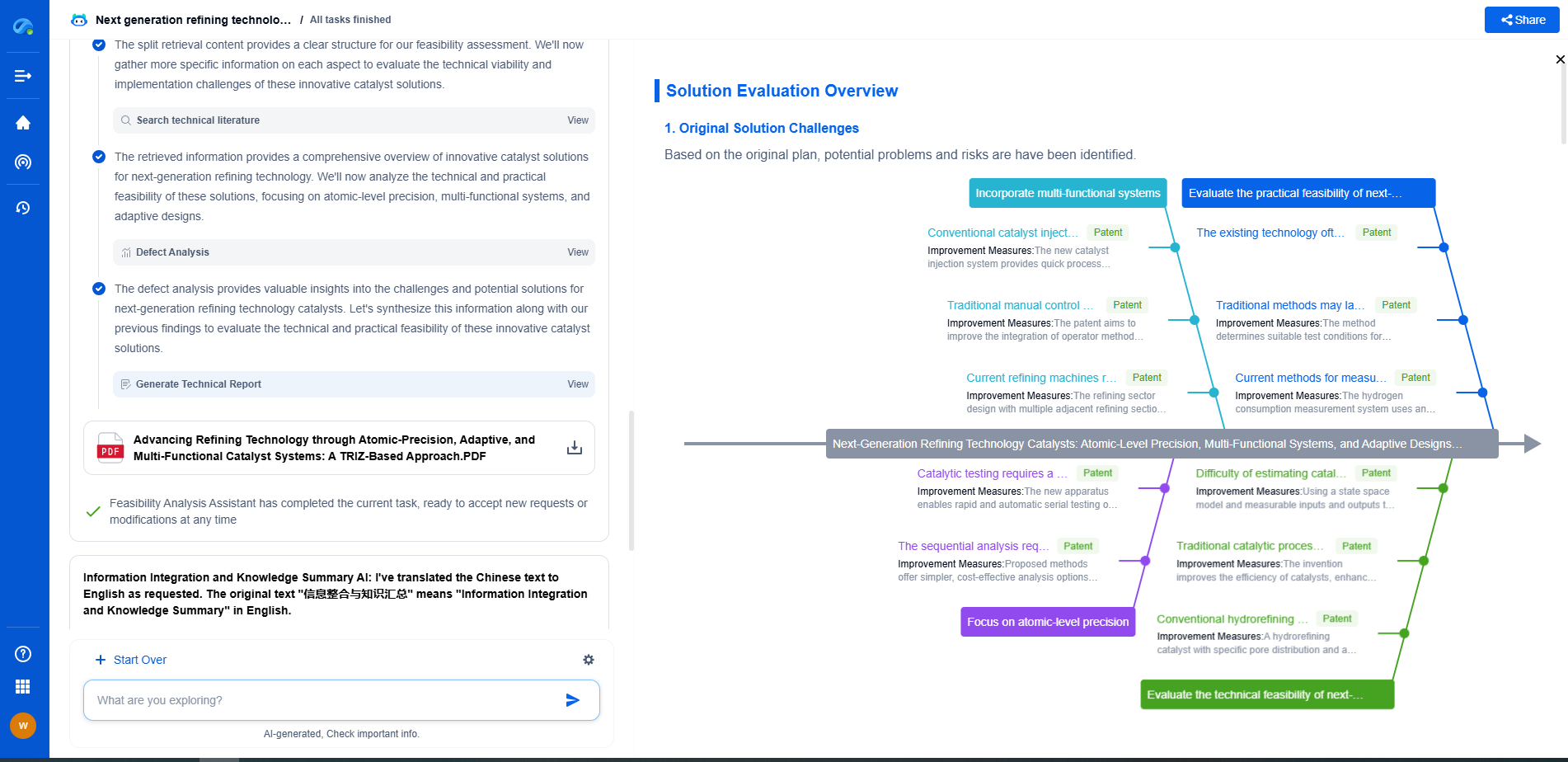How to choose the right simulation tool for robotics
JUN 26, 2025 |
Understanding Your Project Requirements
Before diving into the features of various simulation tools, it's essential to have a clear understanding of your project's specific requirements. Different robotics projects have unique needs, depending on factors like the complexity of the system, real-world application, and the desired level of precision.
1. **Define the Purpose**: Determine what you need the simulation tool for. Are you testing algorithms, validating designs, or conducting safety assessments? Each purpose may necessitate different features and capabilities.
2. **Identify the Scale**: Consider the size and scope of your project. Larger, more complex projects might require advanced tools with extensive functionality, while smaller, simpler projects could make do with more basic options.
3. **Understand the Environment**: Consider the environment in which the robot will operate. If it will be used in a dynamic or highly unpredictable setting, you'll need a simulator that can accurately replicate such conditions.
Evaluating Simulation Tool Features
With a clear understanding of your project's needs, the next step is to evaluate the features offered by different simulation tools. Here are some critical features to consider:
1. **Physics Engine**: A robust physics engine is crucial for realistic simulation. It should accurately model forces, friction, and collisions. Tools like Gazebo and V-REP are known for their powerful physics engines.
2. **3D Visualization**: Good visualization capabilities can help you understand how the robot will interact with its environment. Look for tools that offer detailed and realistic 3D graphics.
3. **Interoperability**: Consider whether the tool can integrate with other software and hardware you're using. Compatibility with programming languages like Python and C++ or with ROS (Robot Operating System) can be crucial.
4. **User Interface**: A user-friendly interface can significantly enhance productivity. Ensure the tool you choose is intuitive and easy to navigate.
5. **Community and Support**: A strong user community and available support can be invaluable, especially if you encounter issues. Check for the existence of forums, tutorials, and documentation.
Cost and Licensing Considerations
The cost of simulation tools can vary widely, from open-source options to high-end commercial software. Consider your budget and the value different tools provide.
1. **Open-source vs. Commercial**: Open-source tools like Gazebo and Webots can be excellent for cost-conscious projects, offering substantial flexibility and community support. However, commercial tools often provide professional support and advanced features that might be worth the investment.
2. **Licensing Requirements**: Pay attention to licensing terms, especially if your project involves commercial usage. Some tools may require a different license for commercial applications.
Skill Level and Team Expertise
The skill level of your team plays a significant role in selecting a simulation tool. Some tools are more intuitive and easier to learn, while others have a steeper learning curve but offer richer features.
1. **Technical Expertise**: Assess the technical expertise of your team. If your team is more experienced, they may be able to handle complex tools and develop customized solutions.
2. **Training Resources**: Consider the availability of training resources. Tools with comprehensive learning materials, such as tutorials and documentation, can enhance your team's ability to effectively use the software.
Testing and Validation
Before making a final decision, it's advisable to test multiple tools to see which one best fits your needs. Many tools offer free trials or demo versions that you can experiment with.
1. **Prototype Testing**: Use a prototype of your project and run it through different simulation tools to assess performance and ease of use.
2. **Feedback Loop**: Involve your team in the testing process and gather feedback to make an informed decision.
Conclusion
Choosing the right simulation tool for robotics is a nuanced process that involves evaluating your project requirements, the features of different tools, cost considerations, and your team’s expertise. By carefully examining these factors, you can select a tool that not only meets your current needs but also supports your project as it evolves. With the right tool in hand, you'll be well-equipped to achieve your robotics project goals.
Ready to Redefine Your Robotics R&D Workflow?
Whether you're designing next-generation robotic arms, optimizing manipulator kinematics, or mining patent data for innovation insights, Patsnap Eureka, our cutting-edge AI assistant, is built for R&D and IP professionals in high-tech industries, is built to accelerate every step of your journey.
No more getting buried in thousands of documents or wasting time on repetitive technical analysis. Our AI Agent helps R&D and IP teams in high-tech enterprises save hundreds of hours, reduce risk of oversight, and move from concept to prototype faster than ever before.
👉 Experience how AI can revolutionize your robotics innovation cycle. Explore Patsnap Eureka today and see the difference.
- R&D
- Intellectual Property
- Life Sciences
- Materials
- Tech Scout
- Unparalleled Data Quality
- Higher Quality Content
- 60% Fewer Hallucinations
Browse by: Latest US Patents, China's latest patents, Technical Efficacy Thesaurus, Application Domain, Technology Topic, Popular Technical Reports.
© 2025 PatSnap. All rights reserved.Legal|Privacy policy|Modern Slavery Act Transparency Statement|Sitemap|About US| Contact US: help@patsnap.com

